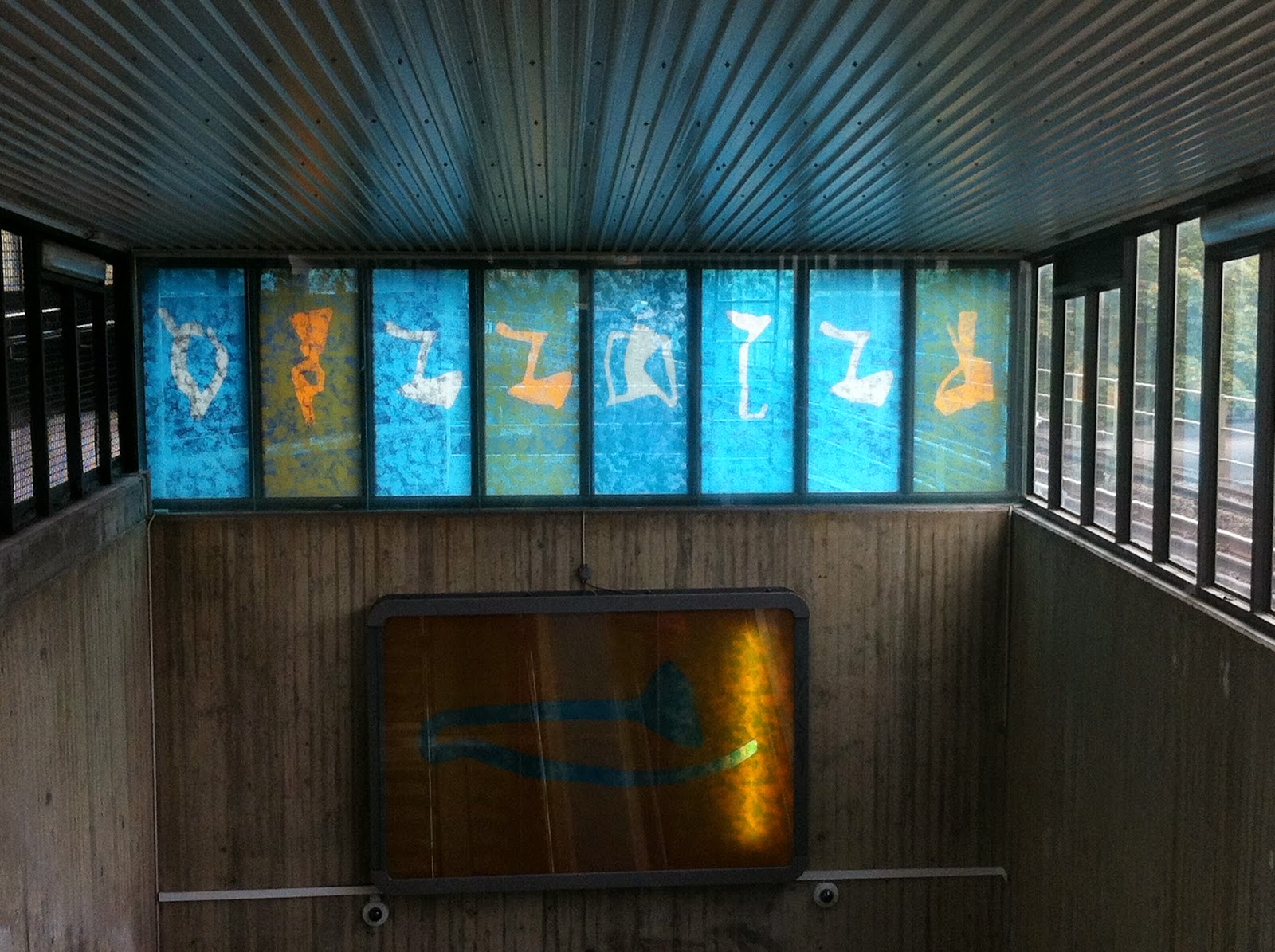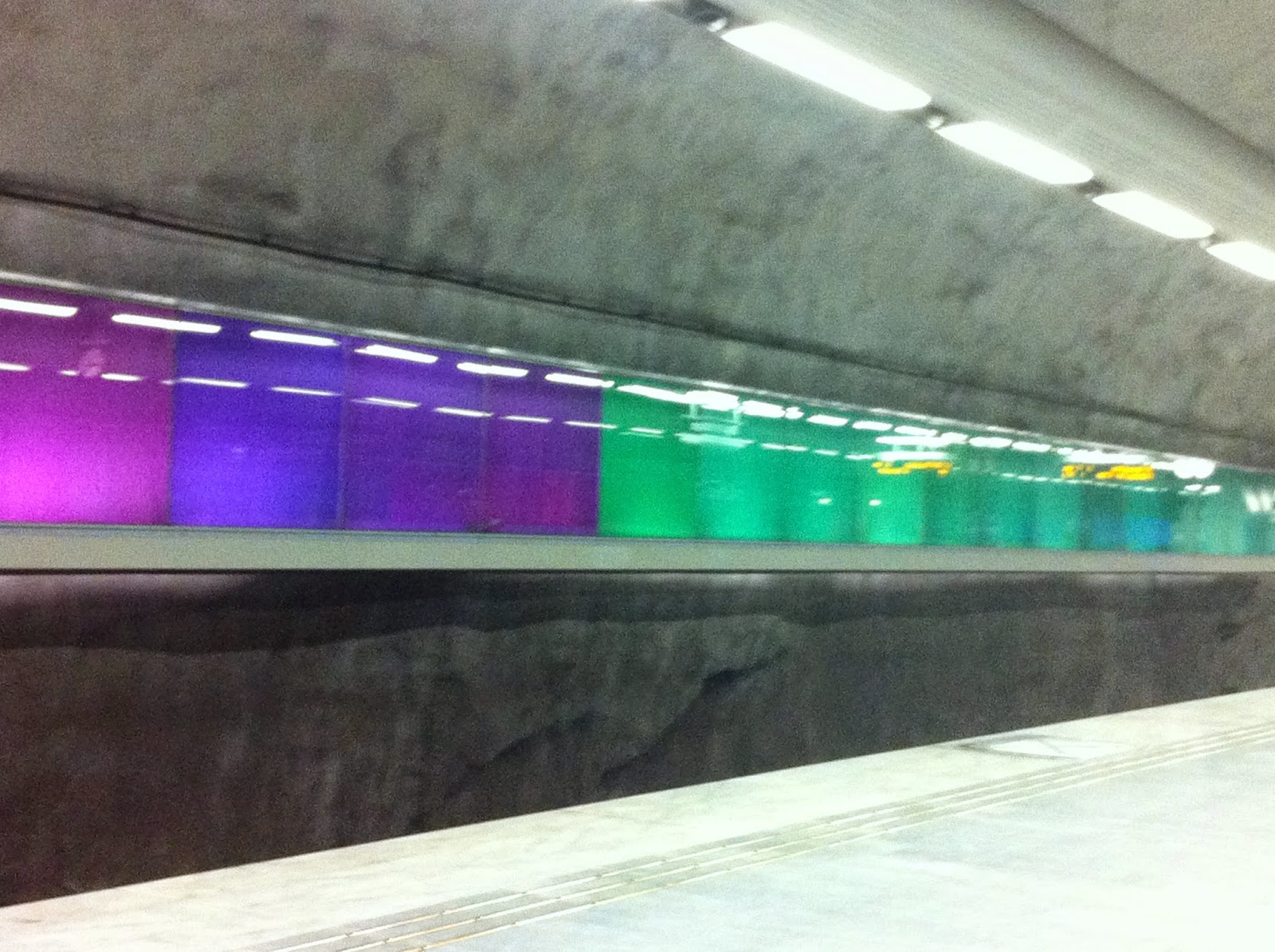After translating the plaque as best I am able, I went on to read a bit about the artist Helga Henschen, because she seemed to have such a focus, and goal for her station. Which led me to researching the neighourhood a bit, as I have nver heard anyone mention it, the stop before this one is a bit notorious but somehow I did not know about this one, but that all makes more sense when I read about the area here:
I am assuming by the time, in the 1970s that the subway made it to this location, the area was viewed as an immigrant area. While Stockholm seems to me to be becoming more and more diverse, I will say that there are neighborhoods if one visited just that neighborhood their impression of Stockholm would be skewed. Of course, many would perhaps argue that Tensta is not really Stockholm, although technically it is in the city limits.
I only have my own (albeit) limited perception but the area did seem to be an immigrant area, of course, this could just be people whose grandparents were born elsewhere, or perhaps there is immediate housing for people that are newly immigrated, if the article is correct a few years ago, the percentage of kids in school here was 95% of foreign origin. - So, it was interesting to me that artist chose so long ago to create a happy, bright, welcoming station via her artwork, and text in different languages and that it is still relevant.
The plaque states that the art is for those who live here and "a rose for immigrants, solidarity and brotherhood" or at least that is the literal translation.
Of course, all I saw were people rushing by without a glance, expect to glance at me as if I was strange to be pausing and taking photos.
Also, I have a fondness for the stations where you can clearly see down the train tunnel.


























































